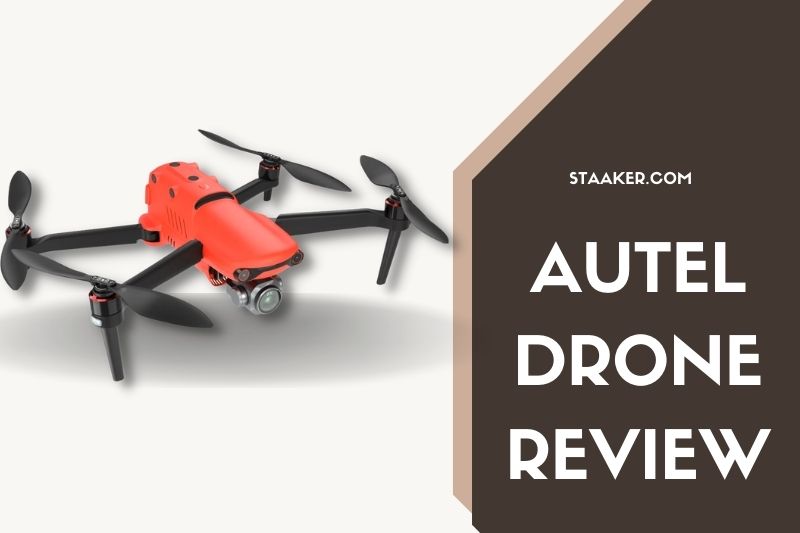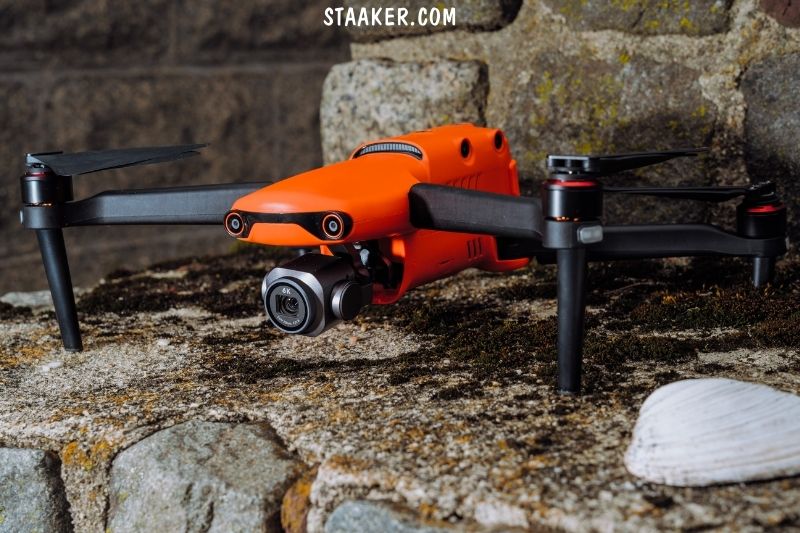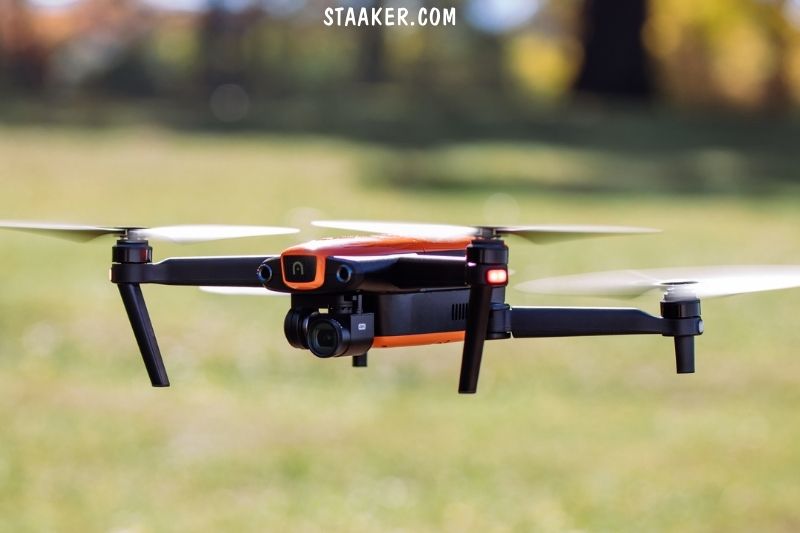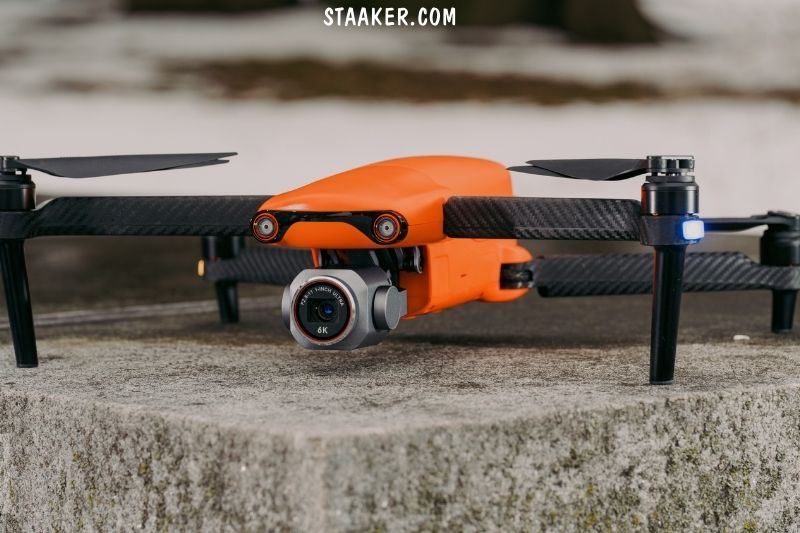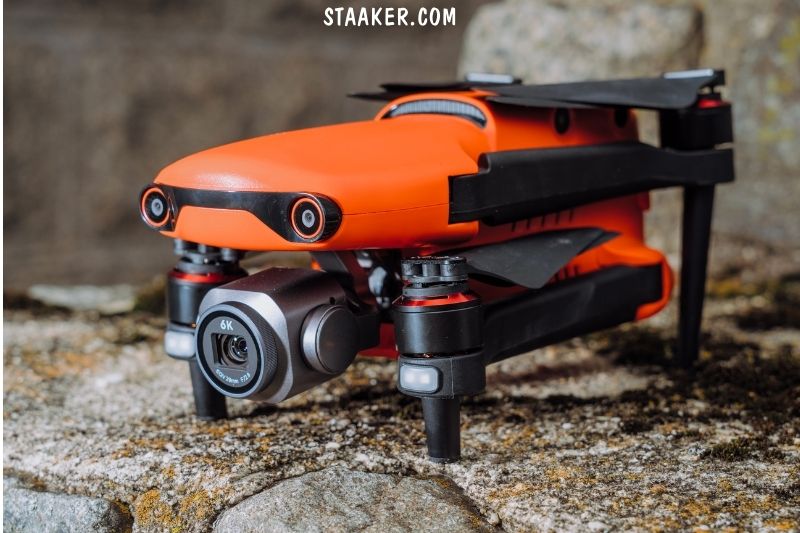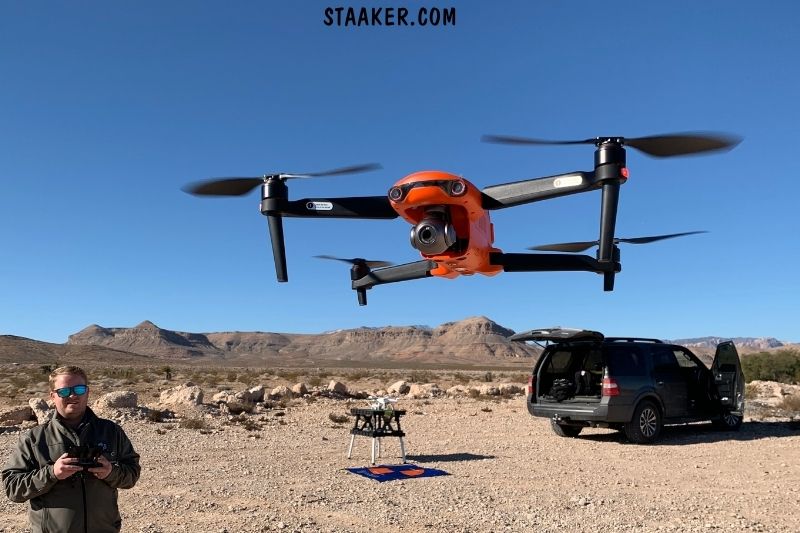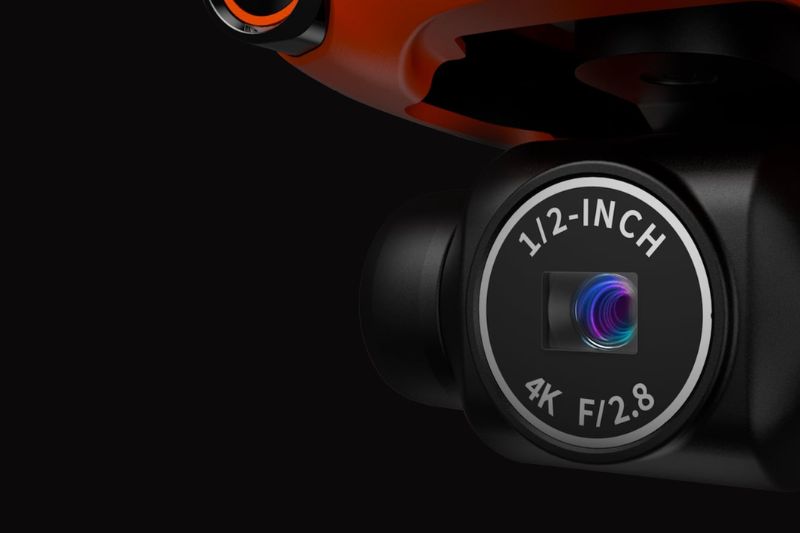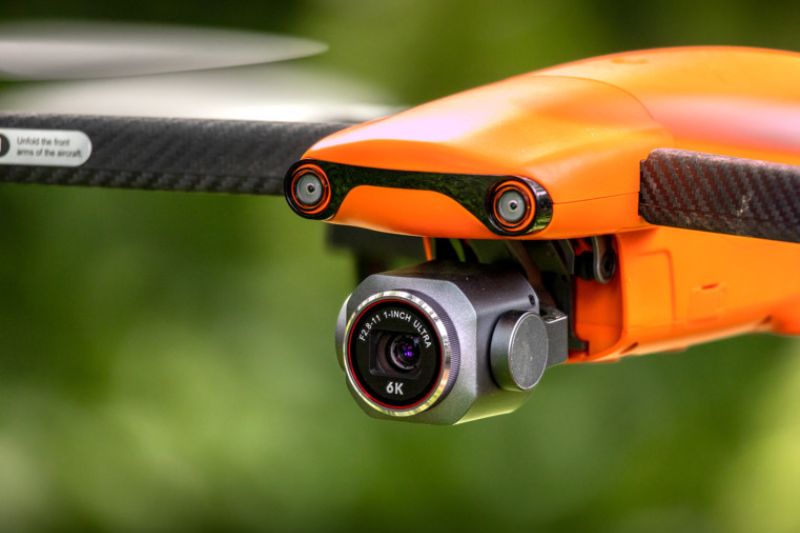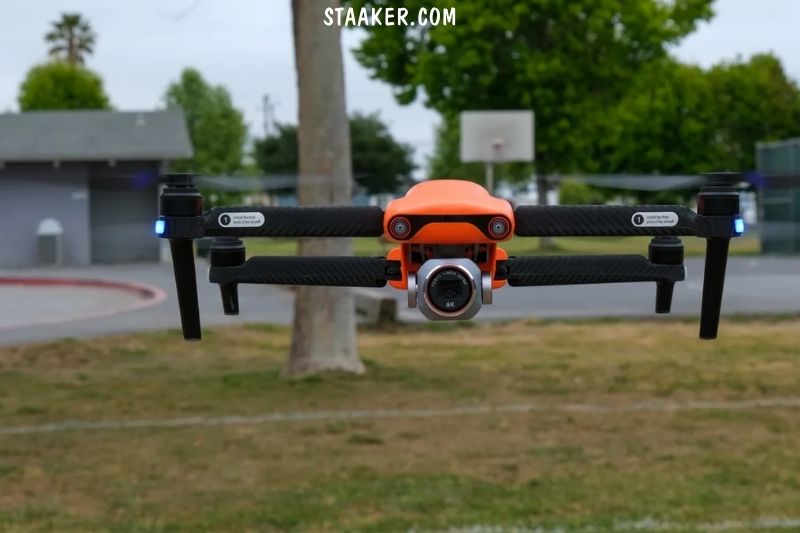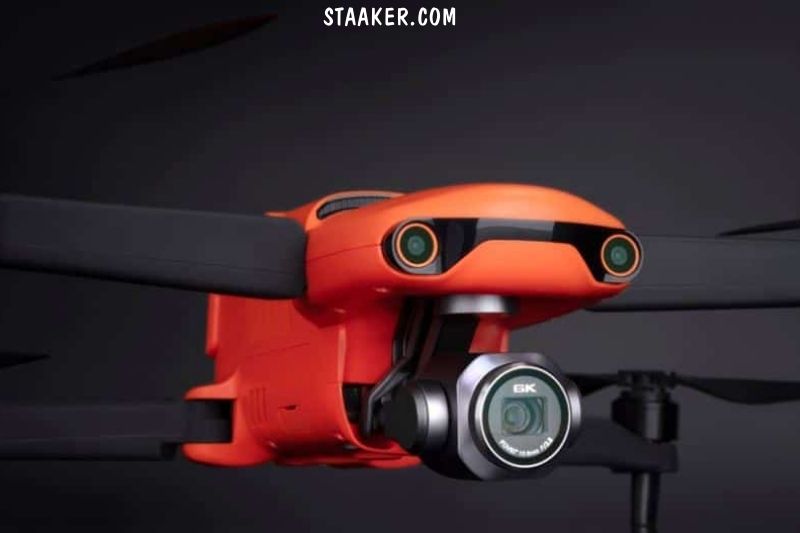If you’re in the market for a new drone, you may be wondering if the Autel is a good option. It’s a good choice for beginners and hobbyists, as it’s relatively easy to fly and has a lot of features.
However, it’s not the best option if you’re looking for a professional-grade drone, as it doesn’t have all the bells and whistles that more expensive models offer. After all, it’s one of the more popular models on the market. Here’s a quick Autel drone review.
Autel Robotics EVO II Pro Overview
PROS
- 6K video and 20MP RAW photography
- 1-inch camera sensor
- Multiple color schemes, including Log, are supported.
- 10-bit HDR up to 4K resolution
- Raw and JPEG support for images
- Large battery for flights exceeding 30 minutes
- Sensors for detecting obstacles and automated flight paths
CONS
- The default video profile is oversharpened.
- Many functions still necessitate smartphone applications.
- 10-bit Log video not accessible at 6K
- iPhone cord sold separately
AUTEL ROBOTICS EVO II PRO SPECS
- Dimensional dimensions of 4.5 by 4.3 by 9.0 inches
- Weight 2.6 lb
- Rotors 4
You must link your smartphone to most consumer drones to see through the camera and take images. With the EVO II Pro, Autel Robotics takes a different approach by integrating a color display into the controller, allowing users to fly, take photos, and record video without requiring an additional device.
It is a solid performer overall, but you must pay extra for the ability to control the quadcopter without a smartphone, and many cameras features still require an app. The DJI Air 2S is a more compact drone with a comparable camera.
High Visibility
The EVO II Pro is large for a small drone, with dimensions of 4.5 by 4.3 by 9.0 inches (HWD) and a takeoff weight of 2.6 pounds. In addition to being highly noticeable, it has a vivid orange finish.
Since time immemorial, Autel has utilized the color scheme. Orange stands out against blue skies and green fields, making this drone slightly easier to find than those with light finishes.
Pilots must register to ply drones with the Federal Aviation Administration to operate the EVO II Pro in the United States. The FAA Drone Zone website provides all the information, but a $5 fee covers most people for three years.
If you are flying for compensation, you must complete a certification course. If you’re unfamiliar with drones, you should familiarize yourself with the basic norms and regulations.
At normal speed, the airframe’s obstacle sensors will prevent the aircraft from colliding with an object, allowing you to concentrate on your camera work. Additionally, the flight battery is rather large and contributes to the EVO II’s best-in-class 40-minute flight rating.
However, the actual battery life varies. In testing, I averaged closer to 32 minutes, which is marginally better than the DJI Mavic Air 2 and Air 2S, but not significantly so.
How you fly the EVO is relevant. Hovering requires more energy than forwarding flight; the battery is rated for around 35 minutes of hover time.
Additionally, it depletes more rapidly when using the high-speed flight mode, Ludicrous speed. It’s unclear whether this references Spaceballs or the Fast and Furious franchise, but it’s a noteworthy detail.
In its primary flight mode, the EVO II can reach a maximum speed of 22 mph and features 360-degree obstacle recognition. It is especially beneficial for working close to the ground, where trees or other obstacles may be a problem. Switching to the Ludicrous setting when flying higher over the trees provides footage with a more excellent sensation of momentum.
There is a micro USB connector for connecting to a computer and downloading files from the drone’s 8GB of internal storage. There is not much capacity for 6K recording. Therefore a memory card is an almost essential accessory. That’s not a major concern, as microSD cards are inexpensive; you can purchase a 64GB card for less than $20.
GPS is used to stabilize the EVO. Due to its precise satellite placement and various sensors, it floats in place without significant drift. If you’re using the drone in conjunction with a smartphone app, you’ll be able to see its whereabouts on a global map.
However, you won’t have this capability if you’re only using the provided remote. However, automated return-to-home is still an option because the EVO II remembers its takeoff location.
You can establish distance restrictions for the drone, but there is no geofence enforcement around airports or other prohibited flight zones. Thus, you are responsible for determining whether you are permitted to take off from your current location. If you have any questions, consult the FAA’s B4UFLY application.
This has an additional attraction for professional pilots who are aware of where they are and are not permitted to fly. By default, the great DJI drones impose no-fly and restricted flight zones, requiring certified pilots to undergo an unlocking procedure prior to departure. If authorization is already granted, there is no need to do this additional step with the EVO II.
Remote Control
The remote control style of the EVO II is identical to that of the first-generation model. It distinguishes itself from other brands by integrating a full-color display, so you can watch the camera’s perspective without connecting your smartphone.
It has standard drone controls. The left stick controls altitude and yaw, while the right stick drives the drone in space to the right, left, forward, and backward. If you’ve never flown a drone, the experience is comparable to playing a flight-based video game.
There are buttons on the front of the remote to take off and land, pause while in flight, return the drone to its launch point, and power the remote on and off.
Dual antennae are located at the top, along with control wheels for camera tilt, EV adjustment, and photo and video capture buttons. You can remove the phone clip with a flathead screwdriver if you do not intend to connect to the smartphone application.
App-free operating has certain limits. The remote’s screen does not enable touch control. Therefore to traverse menus and modify exposure settings, you must utilize a control dial and button combination. You can alter video resolution and frame rate via the remote, but you cannot adjust profile settings or switch between standard and Log recording.
You won’t be able to view the drone’s location on a global map, nor will you have access to any of the automated flight modes available through the EVO II phone app. It can execute orbits through the application and identify and track subjects using several tracking paths.
Even if you don’t use these additional functions, there’s no denying that the touch interface on a smartphone makes it easier to navigate the app. Touch-based menus and camera settings are accessible via simple taps. The app provides access to the camera’s functionality, not just the fundamentals.
Downloading the Autel Explorer app is free for Android and iOS devices. The remote features a USB-A socket for connecting your phone, and it comes with cables for micro USB and USB-C phones.
However, it does not include a Lightning cable, so iPhone owners must provide their own. Note that the controller does not charge your mobile device. During a lengthier flight, the battery life of my iPhone 8 Plus decreased by 30 percent, but it’s nowhere near what it used to be.
The remote’s battery is suitable for longer flights, but you must ensure that it is fully charged before taking off. It charges via a micro USB connector on the bottom; however, a charging cable is available if you do not have one. We’d also want the remote’s cooling fan to be quieter. It does not operate continuously but activates whenever the remote is powered on.
There are several UI glitches. Switching between different resolutions tends to reset the frame rate to the default, so you should always ensure that your video’s frame rate is properly adjusted.
I also encountered problems when attempting to upgrade the drone’s firmware via the remote and phone app; the procedure remained stuck at 99 percent. The firmware update ran without a hitch when I instead installed the latest version into a microSD card.
1-Inch Sensor Camera
The camera distinguishes the EVO II Pro from the first-generation and basic EVO II. In place of a smartphone-sized sensor, as with most consumer drones, Autel employs a 1-inch-class processor, the same as Sony’s premium RX100 series.
The regular EVO II ($1,495) employs the same flight technology, but its 48MP Quad Bayer camera with 8K capability is made possible by a smaller image sensor.
The sensor architecture has almost four times the surface area of conventional drone cameras. At higher ISOs, it provides greater detail, a broader dynamic range, and enhanced image quality. The camera on the EVO II Pro may have fewer pixels than the 48MP/8K camera on the normal EVO II, but it is the Pro component.
The 20MP output and F2.8 lens produce photographs with exceptional detail. You can operate in JPG mode, which eliminates some barrel distortion and chromatic aberration but restricts your ability to modify images. Digital zoom is also available for JPG capture, but it is identical to cropping a photo afterward; it is always preferable to approach closer to a subject if it is safe to do so.
The DNG option saves photographs in a Raw format, permitting adjustments to colors, shadows, etc. I worked with images in Adobe Lightroom Classic and enjoyed much freedom in adjusting photo tones to my liking. You may repair the noticeable barrel distortion and color fringing using any respectable Raw processor.
The lens features a mechanical aperture identical to the DJI Mavic 2 Pro. It enables photographers to narrow the f-stop to capture photographs with crisp, multi-point sun stars, a look that may be achieved between f/8 and f/11. However, there is considerable resolution loss when stopping down that far, so it’s best to maintain the lens at f/5.6 or wider in most scenarios.
The variable aperture is very beneficial for video. You’ll need to adjust the aperture setting to achieve the correct shutter speeds for 24fps and 30fps movies, typically 1/48-second and 1/60-second. Neutral-density filters are still useful tools on bright days; just as with photography, it’s ideal for keeping the aperture at f/5.6 or wider for optimum video quality.
Regarding resolution, the camera can record 6K at 30fps, 4K at 60fps, and 2.7K or 1080p at 120fps. Cinematic (24fps), PAL (25fps), and NTSC (30fps), as well as off-speed choices in modes that enable them, are included. The 48fps frame rate is essential for cinematic films that want to implement a slow-motion effect.
That video profiles are customized is a plus. The default video profile has an unsightly, oversharpened appearance. It is most noticeable in aerials containing grass and trees, where the sharpness makes everything appear extremely noisy. Adding a -2 or -3 adjustment to the sharpness restores order.
The default color profile is aesthetically pleasant and ready for sharing. You may also select black-and-white or a retro filter. The log is a low-contrast, flat style suited for color grading and will be selected by more sophisticated users.
The camera produces 8-bit Log files at the full 6K resolution but 10-bit files that are more pliable at 4K30 and below.
By design, the Log footage has low contrast. Autel offers an official LUT for editing; we utilized it to grade our example clip. There is no method to monitor with a LUT applied in the application, a function available on some professional video cameras. We’re not surprised by the feature’s omission, but it’s a shame because the low-contrast video can be difficult to view on sunny days.
You will encounter an 8-bit video and a limited field of view at any slow-motion frame rate. This is generally advantageous for drone cameras since it provides more separation between the quadcopter and subject.
HDR is also available in 4K30 and lower resolutions. It is useful for working in scenarios with dramatic lightings, such as sunsets and sunrises. The HDR effect reveals shadow detail and is ready for sharing without the need for color correction.
The film is stored in a standard color space, making editing easier than the higher-quality HDR HLG format that DJI includes in the Air 2S.
Battery Performance
Autel continues to demonstrate its aim to keep pilots in the air longer by offering a drone with the most flight duration per battery of any COTS system, boasting up to 42 minutes of flight time with a single EVO II battery in windless circumstances and without accessories.
After many test flights at the Nine Ten Drones training center in Fayetteville, North Carolina, we have averaged a maximum flying time of 36 minutes and 48 seconds, with winds ranging from 5 to 20 miles per hour.
We depleted the EVO II battery in each test flight until the EVO II Dual 640T required a forced landing. This frequently occurred with 2:00 minutes remaining in the flight (down to roughly 5-6 percent battery).
Compared to non-enterprise edition EVO II drones, 36 to 37 minutes of flight time is roughly a three-minute increase, largely attributable to modifications made to the aircraft arms and propellers.
With this increased flying duration, you can audit additional utilities or seek a missing or wanted individual for longer. After depleting the EVO II battery to 5 percent, it took almost 110 minutes to recharge it to 100 percent capacity.
The Enterprise Bundle consists of three(3) batteries and a battery charging hub that enables operators to charge up to four(4) batteries simultaneously, utilizing a “trickle” charge method that is suited for overnight charging but not for rapid charging in the field.
Additional batteries will cost $219, and the Enterprise Bundle will allow pilots to fly for more than 90 minutes without recharging.
An Alternative to DJI
Unsurprisingly, DJI drones dominate the consumer market. Others have attempted to compete in this market but have either withdrawn (GoPro) or focused on industrial products (Yuneec).
The EVO II Pro is a genuine competitor to DJI’s Mavic folding drones. Its camera is comparable to the Mavic 2 Pro and Air 2S, and we appreciate the 360-degree object recognition system and other standard safety measures.
Pros annoyed by DJI’s unlocking process for flights in otherwise restricted locations may view this as a solution, but it should not be viewed as a technique to circumvent rules.
The prospect of a phone-free flight may appeal to some, but without the Explorer app, you cannot use all camera features, and autonomous flight is impossible. However, we do with the application was slightly more polished.
In terms of pricing and features, the DJI Mavic 2 Pro is the closest equivalent model on the market. We gave it a glowing review when it was released three years ago. It is no longer a market leader, but the quality of its Hasselblad camera is undeniable, even though its video resolution is limited to 4K.
The DJI Air 2S is available for roughly $1,000. Its camera lacks aperture control, rendering sunstars impossible and necessitating the use of neutral-density filters to reduce incoming light.
However, the price is unquestionable, it produces a 10-bit video at a full definition, and it can produce a greater variety of automatic shots. However, it is still a DJI drone with all of its accessories. The EVO II Pro is an excellent alternative for pilots who like a bit more autonomy.
Video
FAQs
Parrot Anafi vs autel Evo?
If cost is your only constraint, choose the Parrot ANAFI.
If increased dependability is what you’re after and you’re not an experienced drone pilot, choose the Autel Evo.
What is the difference between the Evo 2 and the Evo 2 Pro?
EVO II 8K includes a 1/2 “A camera sensor capable of capturing 8K video and 48MP still images. The Autel EVO 2 Pro contains a 1 “sensor with a variable aperture and the ability to capture 6K footage.
Is DJI superior to Autel?
The DJI Air 2S and the Autel Evo 2 Pro are outstanding drones. These are, in fact, the two best consumer drones on the market. They both take stunning photographs and movies. Both possess amazing flight modes and specifications.
Conclusion
The Autel Drone is a great choice for anyone in the market for a new drone. It is one of the most popular drones on the market and has a variety of features that make it a great choice for anyone looking to buy a drone.
The Autel Drone is easy to fly and has a variety of safety features that make it a great choice for anyone looking to buy a drone. Hope this drone review was helpful.

